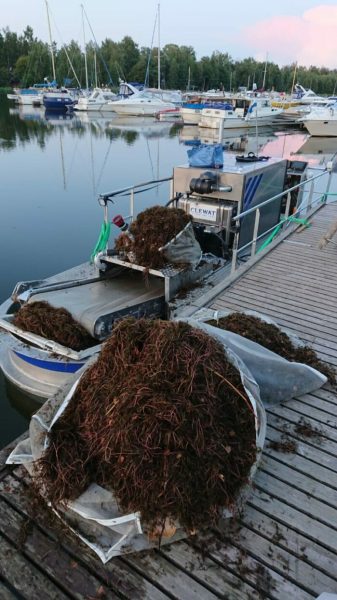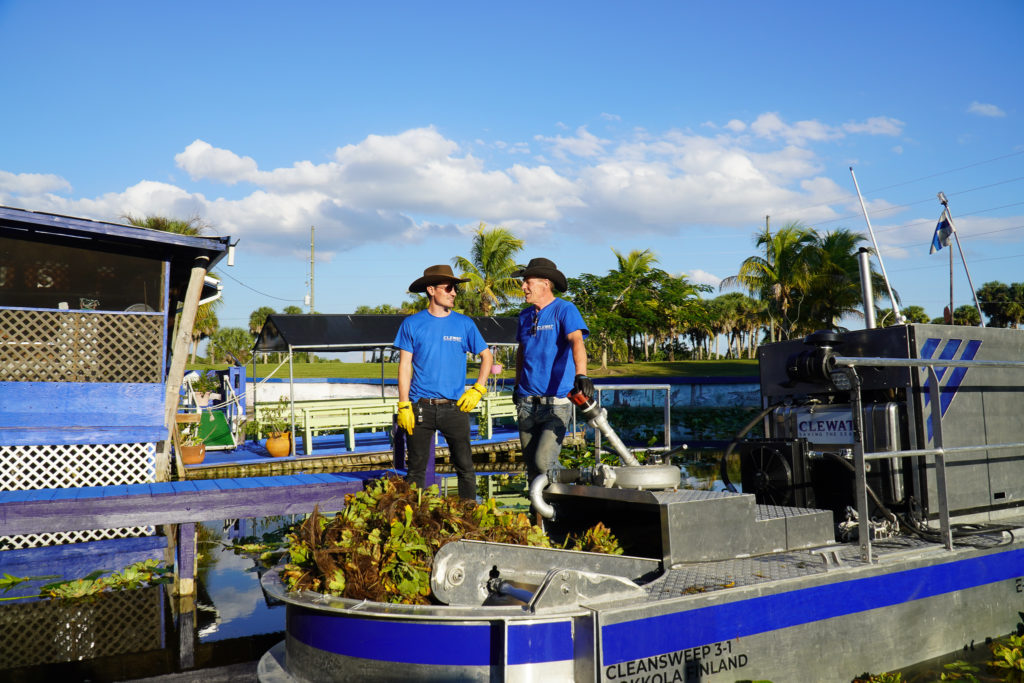removal of invasive plants
We are able to collect from the water up to half a millimeter-sized particles, and our vessel can collect as much as 200 cubic meters of biomass per hour.
There are plenty of nutrients in the water as a result of industrial, wastewater and food production.

As a result, the waterways become eutrophic, which leads to their deterioration, changes in the communities of organisms and the loss of oxygen in the bottom.
Why is it worth removing harmful plants?
Dense and intensive growth of submerged plants hinder the recreational use of water systems. They may also alter the aquatic ecosystem. For example dead Eurasian watermilfoil sinks to the bottom as a plant mass and releases nutrients to the water system.
Some invasive species have economical, environmental, health and social effects. Their disadvantages and risks are prevented by removing the plant. Invasive species compete for food and habitat with other species. They change the habitat by shading other vegetation influencing water chemistry by increasing the amount of nutrients and organic matter and reducing the water flow. They also disturbe the recreational use of waters, fishing and water transport.
With the removed plant mass also nutrients are obviated, so it can improve the condition of the eutrophic lake. Removal of plant biomass can also help to improve the winter oxygen situation, because there is less degradable plant material.
We can do better. Already today.
The water cleaning vessel developed and manufactured by Clewat is capable of removing algae and other harmful vegetation from the water.
Our solution is a catamaran raft which, with the booms in front, collects plants at the mouth of the vessel, where the water flow is regulated so, that various plants and impurities end up on the vessel’s conveyor and further sorted into trash.
Flow-based technology does not cause mechanical stress on water bodies and the operation has no negative environmental impact.

It is possible to collect more than 200 cubic meters harmful vegetation per hour on a single vessel and by adjusting the length of the booms, the width of the area to be treated can be increased even over a kilometer.